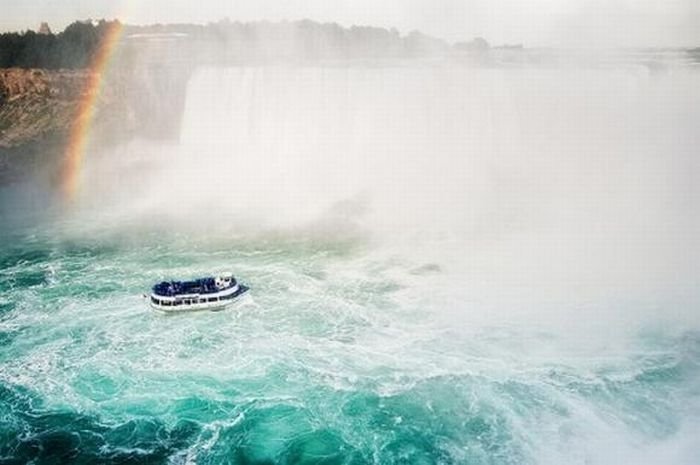|
|
Spectrum Of Rainbow Light
|
Visibility
Rainbows can be observed whenever there are water drops in the air and sunlight shining from behind at a low altitude angle. The most spectacular rainbow displays happen when half the sky is still dark with raining clouds and the observer is at a spot with clear sky in the direction of the sun. The result is a luminous rainbow that contrasts with the darkened background.
The rainbow effect is also commonly seen near waterfalls or fountains. In addition, the effect can be artificially created by dispersing water droplets into the air during a sunny day. Rarely, a moonbow, lunar rainbow or nighttime rainbow, can be seen on strongly moonlit nights. As human visual perception for colour is poor in low light, moonbows are often perceived to be white. It is difficult to photograph the complete semicircle of a rainbow in one frame, as this would require an angle of view of 84°. For a 35 mm camera, a lens with a focal length of 19 mm or less wide-angle lens would be required. Now that powerful software for stitching several images into a panorama is available, images of the entire arc and even secondary arcs can be created fairly easily from a series of overlapping frames. From an aeroplane, one has the opportunity to see the whole circle of the rainbow, with the plane's shadow in the centre. This phenomenon can be confused with the glory, but a glory is usually much smaller, covering only 5–20°.
At good visibility conditions (for example, a dark cloud behind the rainbow), the second arc can be seen, with inverse order of colours. At the background of the blue sky, the second arc is barely visible.
|
|









